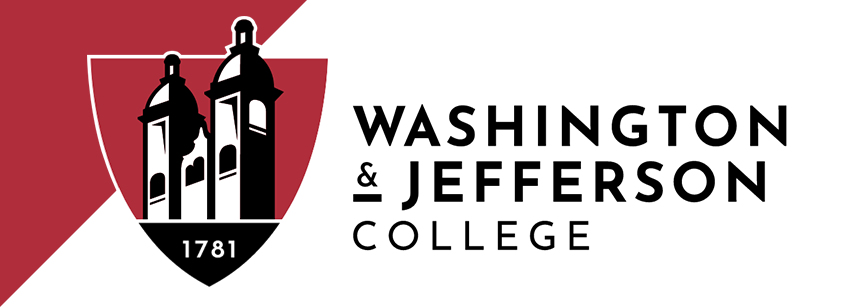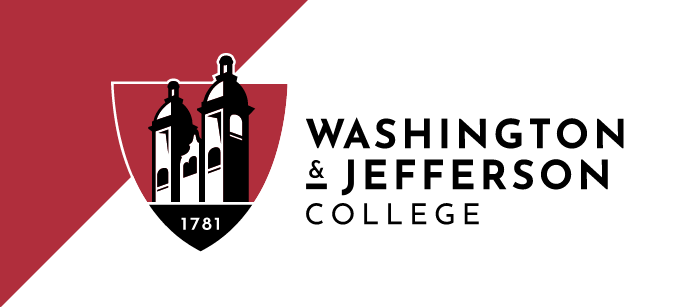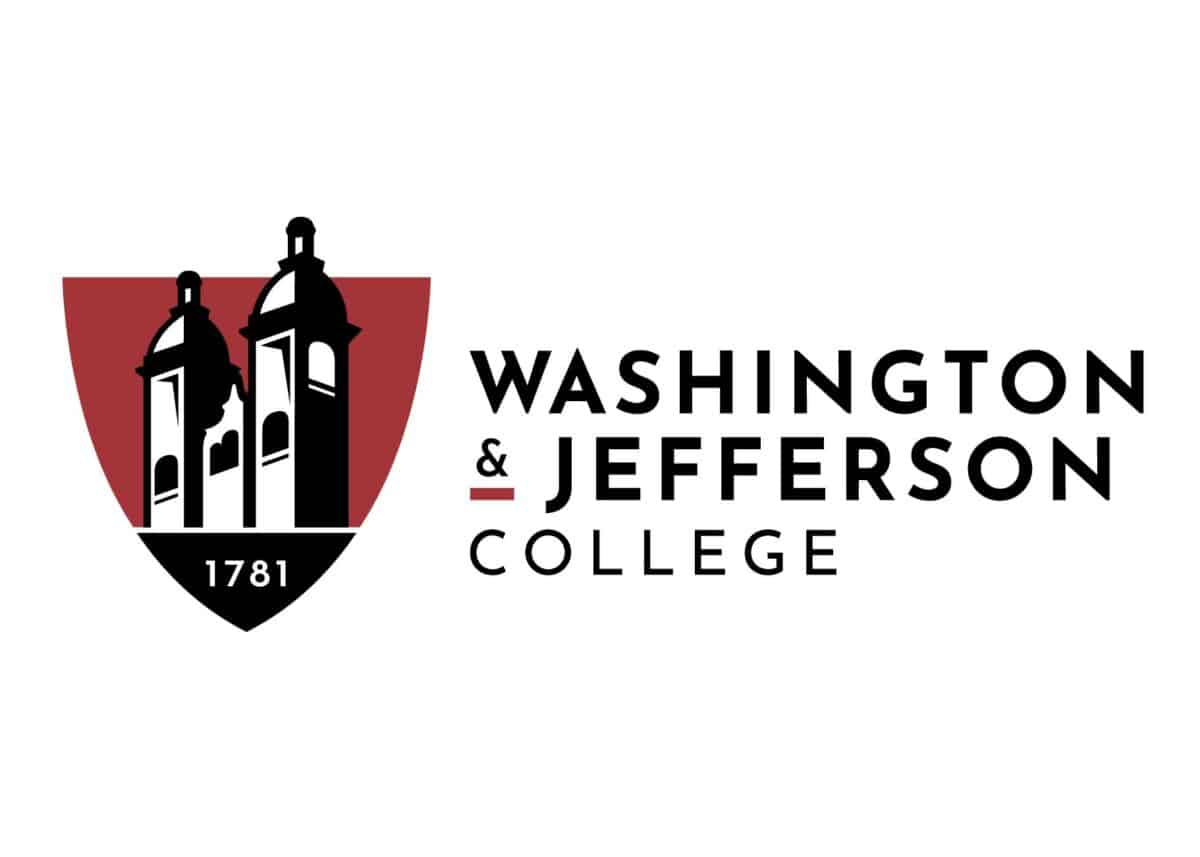Creating a museum exhibit for a national audience isn’t something most undergraduates have the opportunity to do, but nine W&J history students had that chance last spring and attended the debut of their exhibit, “Down but not Out: Baseball after September 11, 2001,” at the Flight 93 National Memorial in April 2018.
Watch the video from the exhibit's debut.
A visit years earlier to the Flight 93 National Memorial started a conversation between Assistant Professor of History David Kieran, Ph.D., and National Park Service (NPS) Regional Superintendent Stephen Clark. The idea of a student-driven presentation sparked both of their imaginations, and they started to think about how to structure a class to make it meaningful for students and to meet the exhibit standards at the site.
Experiential learning adds value to a standard college education. It takes students and professors out of their traditional roles in the classroom environment and places them in a situation where learning is achieved by doing. While deadlines and grades are important in every class, when students work in real-world environments the budgets are limited, their partners are professionals outside of the academic environment, and the audience is the public. During the spring semester, Kieran’s History 410 students faced the challenges of coming together with their classmates, getting creative, and finding solutions to these problems while balancing academic responsibilities.
The idea for the project began when students in Kieran’s 9/11 and the War on Terrorism class visited the Flight 93 National Memorial in the fall of 2016. After the tour, they discussed the topics of their research papers with Clark, the superintendent of the five NPS units of Western Pennsylvania. Abby Cunningham ’17 captured Clark’s attention when she mentioned that she was investigating the connection between 9/11 and baseball. As a former baseball player, Clark started thinking about an exhibit on the subject and reached out to Kieran to see how W&J could be involved.
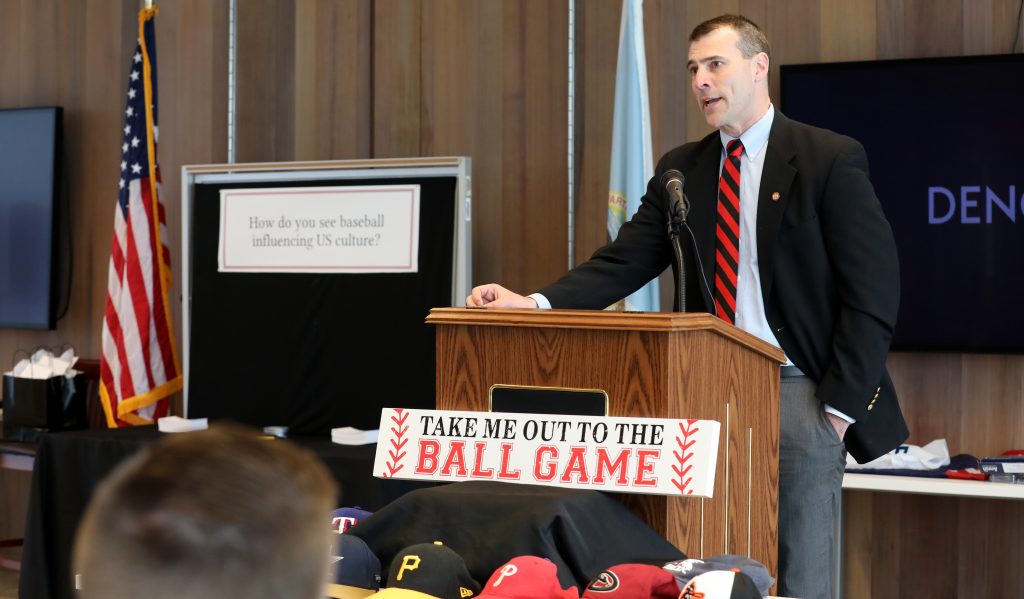
“The National Park Service is a world-renowned organization. We have high standards,” Clark said. In terms of creating an exhibit that fits with the tone of the memorial, Clark said, “it has to be respectful, and it has to have a nexus to this story.”
Clark and Kieran began to talk about how to structure a student-led class to provide an exhibit for the site. Those discussions led to the development of the History 410 Museum Exhibit Class, where nine motivated students had just under four months to create a museum-quality exhibit from scratch.
Students began the class by developing the syllabus and grading scale. Instead of handing them a set of directions, Kieran supported the students in creating their own road map.
“The experience of completely taking charge of the course as a class, rather than a professor-led course, was something none of us had undertaken,” Shannon Boehm ’19 said.
“Our students learn best when they are solving a real-world problem and having an impact on the community,” Kieran said. “When they tackle and solve those problems in their coursework, they leave college prepared to take on what they will inevitably confront in their professional lives and as citizens engaged in civil discourse - complicated problems that resist simple solutions. They can be confident that they can do so, because they already have.”
Faced with real-world deadlines and logistics, the students began outlining the project. This involved figuring out how to work as a team, determining how their skill sets fit in with the rest of the group, adhering to style guides and budgets set by the NPS, learning the process of exhibit design, working with vendors to produce displays, and reaching out to large professional organizations across the country.
Some of the organizations the students worked with are household names, like Major League Baseball, the Pittsburgh Pirates, Louisville Slugger, former New York City Mayor Rudy Giulianni, and the George W. Bush Presidential Center.
“W&J creates critical thinkers who are adept at multidisciplinary thinking through a careful intersection of class structure and extracurricular opportunities,” Harley Moyer ’19 said. “We are able to jump from logistics issues, to communication with professional contacts, to theoretical research very quickly because all of us are able to think in a very holistic, liberal arts-minded way.”
Working backwards from the exhibit’s opening day of May 5, the students set out to determine what was important for the public to know about baseball’s role in helping Americans respond to national tragedy and war. The class divided into three groups, each of which focused on an era of baseball history: the colonial period through World War I; World War I through the year 2000; and from 2000 to the present.
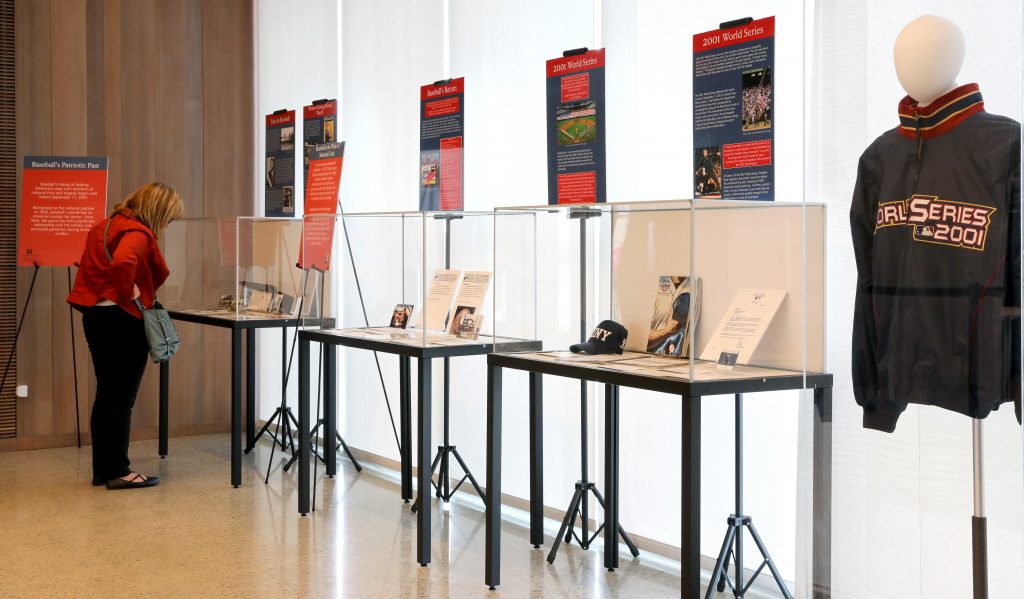
The challenge of presenting their work in such a public way was a unique one. The exhibit needed to explain the connection between sports and national identity as well as resonate with visitors of all ages. They also had to quickly determine which objects they would try to acquire for the exhibit so that they could get them on site in time.
The members of the class took the task seriously. On average, they put in around 100 to 120 hours on the project outside of the scheduled class hours. The work yielded results; they found that both the NPS and their professional contacts across the country respected their work and were willing partners.
“We were amazed that these organizations took us very seriously and were willing to work with us,” Katie Prinkey ’19 said.
Some of the big-ticket objects displayed in the exhibit included the World Series jacket Giuliani wore to a game and the signed ball that former President George W. Bush used to throw out the first pitch in Game 3 of the 2001 World Series, less than one month after the 9/11 attacks.
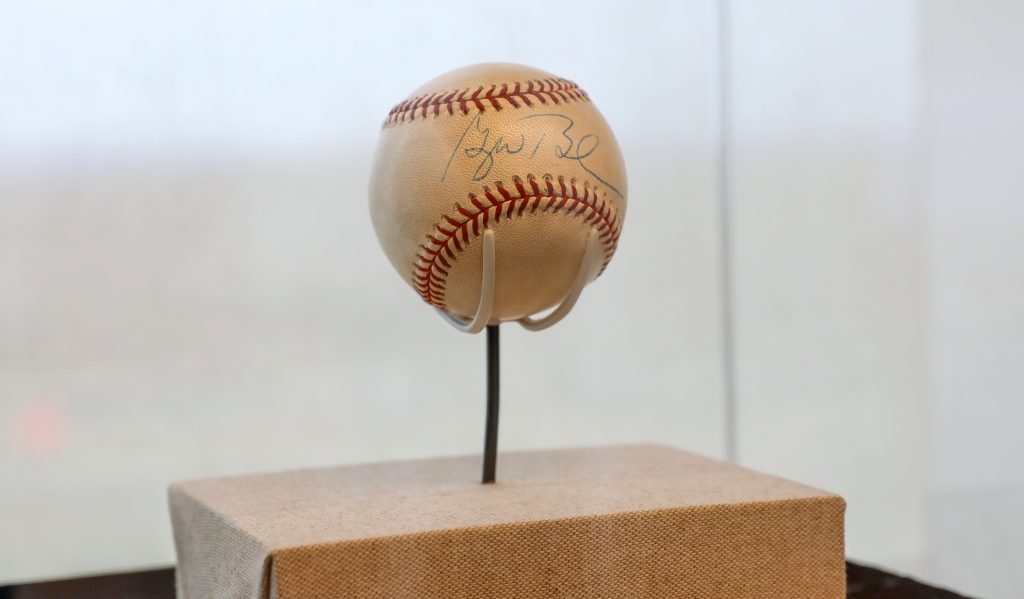
Getting the signed baseball was a home run for the team. The one-of-a-kind object was the most valuable object in the exhibit, requiring special transportation as well as additional security on site. While negotiating the logistics had a few hurdles, the students and the NPS were able to work out terms so that the ball could be part of the display.
With the items secured, the research done, the script complete, and the posters printed, the class was ready to go on site and take the final steps towards making their class project a real exhibit. In addition to the displays and objects, the exhibit included an interactive area where visitors could try their hand at throwing out the first pitch.
“This project was a lot to take on, but the nine of us and Dr. Kieran were all able to overcome any obstacles and differences to create something we are proud of,” Boehm said.
“The [students] not only hit a home run, but they hit a grand slam with bases loaded in the bottom of the 9th,” Clark said. “This was an exhibit that could have been fabricated by professionals.”
Seeing their work open to the public on May 5 meant that the hours of work they had put in were at an end and their project was complete.
“The day the exhibit opened we all breathed a sigh of relief,” Boehm said. “It was a pleasure to see all our hard work pay off and to see it finally become a reality and not just a series of goals we had met.”
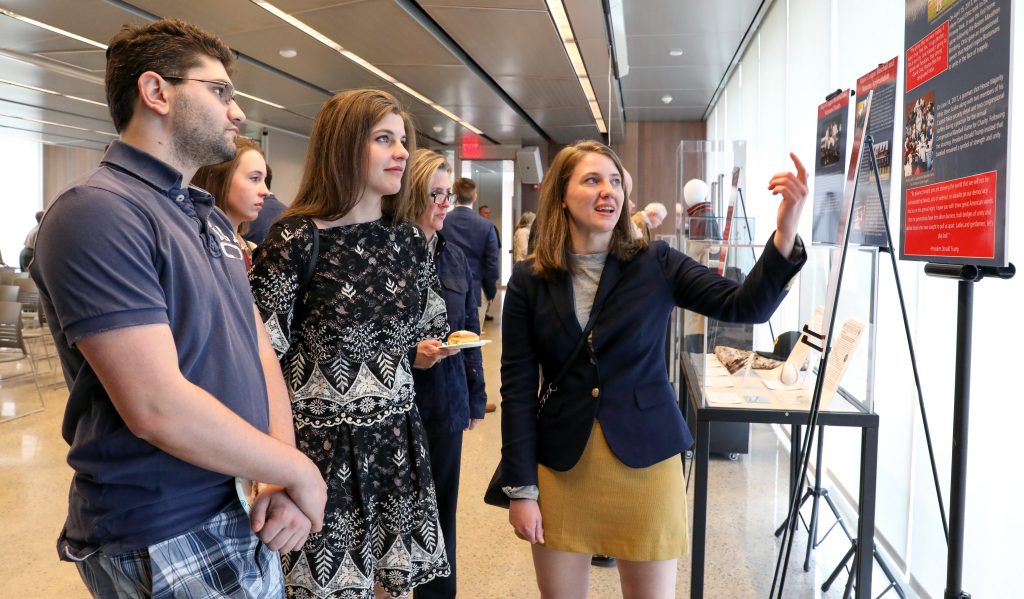
Family and friends who attended the ceremony were impressed with the scope of the final project, but later in the day the impact of their work settled in on the students who stayed to see the exhibit open to the public.
“When I saw people walking through, I knew that those 120 hours were worth it,” Prinkey said.
Seeing a father pick his child up to see an object in the exhibit case and talk about it started to reveal to the students the exhibit’s significance to unknown numbers of future visitors.
“That really resonated with me, the idea that he was using what we had researched and learned to teach his kid. That’s the moment that it really went beyond a school project,” Moyer said.
As Prinkey points out, she and her classmates were four or five years old when the attacks happened. Future generations of students will have little or no memory of these events. What they do know will come from resources like the ones these students have researched and created.
Clark said he has heard nothing but positive feedback from his staff and from the thousands who have passed through. The media attention given to “Down but not Out” drew in visitors, both to the memorial and to the exhibit itself. It was even mentioned on Fox News in a segment on “The Five” with Dana Perino.
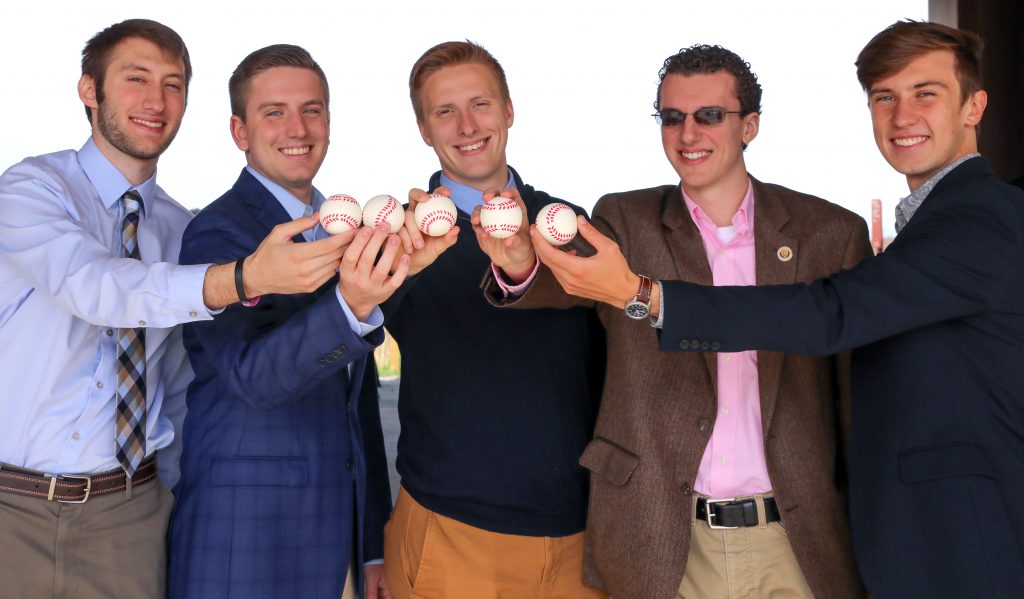
While Dr. Kieran, Stephen Clark, other collaborators, and the students themselves were all impressed with the final results, one visitor in particular was struck by the quality of the exhibit and the caliber of the students and professor working on it.
Abby Cunningham, the student whose paper initially inspired the collaboration, received an invitation to the opening from the class and was present at the event in May.
“I was in awe when I saw all of the work they put into it; those students did a remarkable job of bringing it to life,” she said. “I knew those students and Dr. Kieran would do a great job with this exhibit, but they definitely exceeded my expectations. It’s truly humbling to play even the smallest role in such a prestigious memorial.”
"Down but not Out: Baseball after September 11, 2001," was displayed in the learning center at the Flight 93 Memorial in Shanksville, Pa., from May 5 to July 8, 2018. Pieces of the exhibit have been moved into the archives at the site where they will be held in perpetuity. For more on the exhibit's debut, read the press release and browse the full photo gallery.
